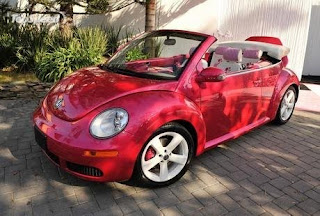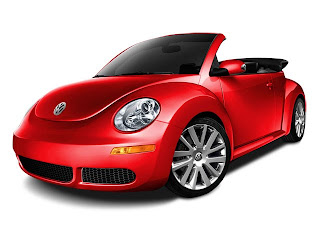The Dell PowerEdge M1000e Modular Blade Enclosure is a breakthrough in enterprise server architecture. Built from the ground up using energy smart technologies the M1000e is designed to combat datacenter sprawl and IT complexity. The M1000e delivers one of the most energy efficient, flexible, and manageable blade server product on the market. Flexible and scalable, the M1000e is designed to support future generations of blade technologies so your investment is protected for the future. The M1000e is optimized for use with all Dell PowerEdge Blades.

Energy Efficiency That Can’t Be Beat
The M1000e is the most power efficient blade solution on the market, built on Dell’s energy smart technology. The M1000e can help customers to increase capacity, lower operating costs, and delivers better performance/watt than leading blade competitors. The M1000e enclosure takes advantage of thermal design efficiencies, such as ultra-efficient power supplies, dynamic power efficient fans with optimized airflow design to efficiently cool the chassis and enable better performance in a lower power envelope. Energy efficiency and performance/watt that HP and IBM can’t beat.
Dell blade servers deliver performance and efficiency without compromise. The PowerEdge M1000e with the M600performs up to 12% 1 better than the IBMBladeCenter H, delivers up to 25% 2 better performance/watt than both the HP BladeSystem c-Class 2 and consumes up to 19% 3 less power than HP BladeSystem c-Class, which can help customers to increase capacity and lower operating costs .
Dell Provides Complete On Demand Switch Scaling
More available I/O slots than previous Dell blades and modular switch options provide the flexibility to meet the increasing demand for improved I/O. The M1000e utilises low cost, modular switches that can easily and cost effectively scale to provide additional uplink and stacking functionality. Flexibility and scalability to maximise TCO.
Easy to Use, Powerful Management Tools
The M1000e helps reduce the cost and complexity of managing computing resources so you can focus on growing your business or managing your organisation.
* Centralised management controllers provide redundant, secure access paths for IT administrators to manage multiple enclosures and blades from a single console making the M1000e one of the easiest blade solutions to manage.
* Dynamic power management provides the capability to set high/low power thresholds to help ensure blades operate within your power envelope.
* Real time reporting for enclosure and blade power consumption, and the ability to prioritise blade slots for power provide optimal control over power resources.
* One of the only blade solutions with an integrated KVM switch, enabling easy set up and deployment, and seamless integration into an existing KVM infrastructure.

Chassis Enclosure
Form Factor: 10U modular enclosure holds up to sixteen half-height blade servers
440.5mm (17.34") H x 447.5mm (17.62")W x 753.6mm (29.67")D
Weight:
Empty Chassis only – 98lbs (44.5kg)
Chassis w/ all rear modules (IOMs, PSUs, CMCs, KVM) - 176lbs (79.8kg)
Max Fully loaded w/ blades and rear modules - 394lbs (178.7kg)
Power Supplies
3 (non-redundant) or 6 (redundant) 2360 watt hot plug power supplies
Based on Dell’s Energy Smart Technologies, the M1000e Power Supplies deliver greater levels of efficiency,
even at very low levels of utilisation
Redundant Power Supplies support 3+3 (AC redundancy), 3+1 (Power Supply Redundancy),
or 3 + 0 (non-redundant) modes
System supports new Dynamic Power Supply Engagement functionality, which (if enabled) puts lightly
loaded power supplies into standby mode, driving up the utilisation and thus the efficiency on the active supplies
Power Supplies Require 200+ volt AC input
Dell offers a wide range of Power Distribution options for the M1000e with 20A, 30A, 60A single phase,
or 30A three phase options
Uninterruptible Power Supplies
1000W-5600W
2700W-5600W High Efficiency Online
Extended Battery Module (EBM)
Network Management Card
Cooling Fans
M1000e Chassis comes standard with 9 hot pluggable, redundant fan modules
Based on Energy Smart Technologies, M1000e fans are a breakthrough in power and cooling efficiency.
The fans deliver low power consumption, but also use next generation “low flow” technology to ensure the
lowest possible amount of fresh air is consumed to cool the enclosure
Input Device
Front Control Panel with interactive Graphical LCD
Supports initial configuration wizard
Local server blade, enclosure, and module information and troubleshooting
Two USB Keyboard/Mouse connections and one Video connection (requires the optional Avocent iKVM switch
to enable these ports) for local front “crash cart” console connections that can be switched between blades
Enclosure I/O Modules
Up to six total I/O modules for three redundant fabrics, featuring Ethernet FlexIO Switches providing
on demand stacking and uplink scalability.
PowerConnectTM M6220 Ethernet Switch
Includes 4 x fixed copper 10/100/1000Mb Ethernet uplinks plus 2 of the following optional modules:
2 x 24Gb Stacking Ports
2 x 10Gb Optical (XFP-SR/LR) uplinks
2 x 10Gb copper CX4 uplinks
Standard Features include
Layer 3 routing (OSPF, RIP, VRRP)
IPv6 support
Layer 2/3 QoS
Access Control Lists
Dell Ethernet Pass-Through Module
Supports 16 x 10/100/1000Mb copper RJ45 connections
Only Ethernet Pass-through module on the market that supports full range of 10/100/1000Mb operation
Brocade® M4424 SAN I/O Module
Access Gateway Mode or FC Switch
Access Gateway Mode enables NPIV functionality on external ports which delivers enhanced fabric interoperability, simplified set up, and doesn’t consume an FC domain
12 or 24 port versions with 4 or 8 x FC 1/2/4Gb SFPs respectively
4Gb Fibre Channel Pass-Through Module
16 x FC 1/2/4Gb SFP ports
Management
System Management
Dell OpenManageTM System Management
Integration into 3rd party management solutions via Dell’s Preferred Partner Program
Remote Management
1 (standard) or optional 2nd (redundant) Chassis Management Controller(s) (CMC) which provide:
Single secure interface for inventory, configuration, monitoring, and alerting for the chassis and all components
Real Time Power/Thermal Monitoring and Management
Real Time System AC Power Consumption with reset-able peak and minimum values
System level power limiting and slot based power prioritisation
Manages Dynamic Power Engagement functionality
Manages fan speed control
Secure Web (SSL) and CLI (Telnet/SSH) interfaces
Supports multiple levels of user roles and permissions, including integration into Microsoft Active Directory Services
2 x 10/100/1000Mb Ethernet ports + 1 serial port
Provides single point of connection from management network to iDRAC on each of the blades and the management interfaces on the integrated I/O Modules
2nd Ethernet port supports daisy chaining of CMCs for improved cable management
Optional Integrated Avocent® keyboard, video and mouse (iKVM) switch
Enables USB and video port on front control panel
iKVM module has 2 x USB, video, and Analog Console Interface (ACI) ports
ARI port allows connectivity and seamless tiering via cat5 cables to Dell or Avocent KVM switches with Analog Rack Interface (ARI) ports.
Storage
External Storage Options:
Dell/EMC fibre channel and/or iSCSI external storage
Dell EqualLogic PS Series Storage, including PS6000E, PS6500E, PS6000X, PS6000XV, PS6000S, PS4000E, PS4000X, & PS4000XV arrays.
Thank you for reading !!!








































